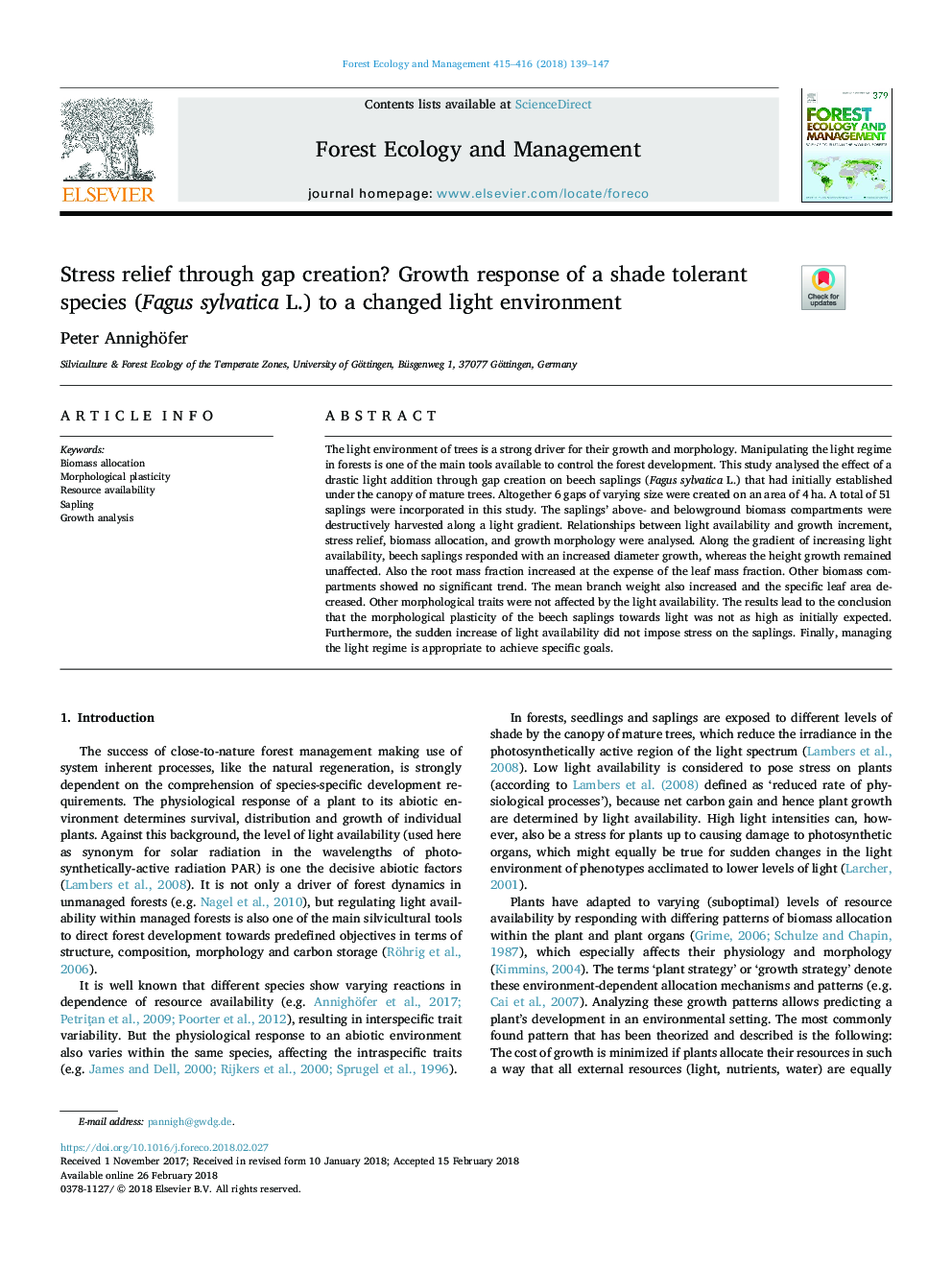| Article ID | Journal | Published Year | Pages | File Type |
|---|---|---|---|---|
| 6541776 | Forest Ecology and Management | 2018 | 9 Pages |
Abstract
The light environment of trees is a strong driver for their growth and morphology. Manipulating the light regime in forests is one of the main tools available to control the forest development. This study analysed the effect of a drastic light addition through gap creation on beech saplings (Fagus sylvatica L.) that had initially established under the canopy of mature trees. Altogether 6 gaps of varying size were created on an area of 4â¯ha. A total of 51 saplings were incorporated in this study. The saplings' above- and belowground biomass compartments were destructively harvested along a light gradient. Relationships between light availability and growth increment, stress relief, biomass allocation, and growth morphology were analysed. Along the gradient of increasing light availability, beech saplings responded with an increased diameter growth, whereas the height growth remained unaffected. Also the root mass fraction increased at the expense of the leaf mass fraction. Other biomass compartments showed no significant trend. The mean branch weight also increased and the specific leaf area decreased. Other morphological traits were not affected by the light availability. The results lead to the conclusion that the morphological plasticity of the beech saplings towards light was not as high as initially expected. Furthermore, the sudden increase of light availability did not impose stress on the saplings. Finally, managing the light regime is appropriate to achieve specific goals.
Related Topics
Life Sciences
Agricultural and Biological Sciences
Ecology, Evolution, Behavior and Systematics
Authors
Peter Annighöfer,
